Lords of Beasts
1. This Lord of Beasts on a fifth-century ivory in the Bargello
Museum, Florence
has been interpreted as Adam...
2. It has resemblances to earlier, non-Christian lords of beasts,
such as the Phrygian god Sabazios/Sabazius,
in the Albanian National Archæological Museum, Tirana.
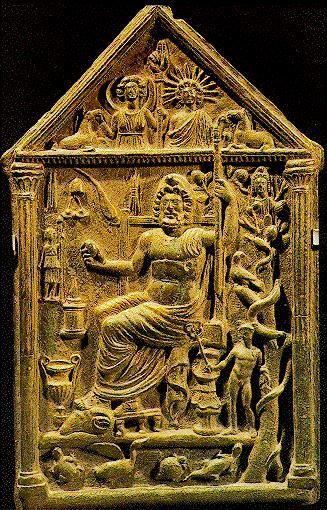
3. But on the celebrated Girona Creation Tapestry, Adam is shown
as actually speaking.
The text paraphrases the Vulgate:
Appellavitque
Adam nominibus suis cuncta animantia
et universa volatilia caeli et omnes bestias terrae Adam vero non
inveniebatur adiutor similis eius.
And
Adam gave names to all cattle, and to the fowl of the air,
and to every beast of the field; but for Adam there was not found
an help meet for him.
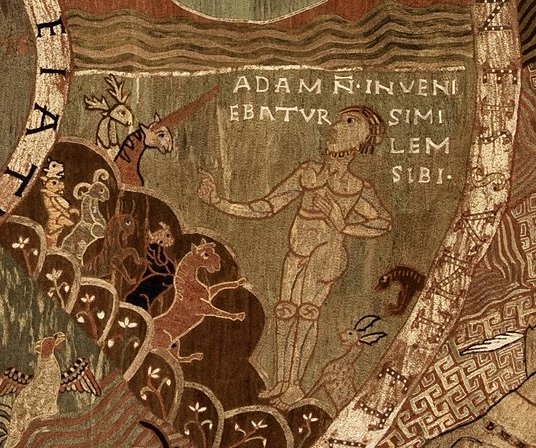
4.God the Father (reminiscent of Sabatius) as Lord
of Beasts
on a late-twelfth century capital in the church of Sainte-Radegonde
in Poitiers.

photo by Tina Negus
5. Orpheus holding his lyre
with beasts at his feet and a Minotaur,
at Brioude (Haute-Loire).

He appears in mirror image on the other side of
the capital.
6. Orpheus with his lyre, charming beasts, a centaur
and Pan
on a fifth-century mosaic in Jerusalem.
He wears a Phrygian cap.
The god Sabatios was Phrygian.
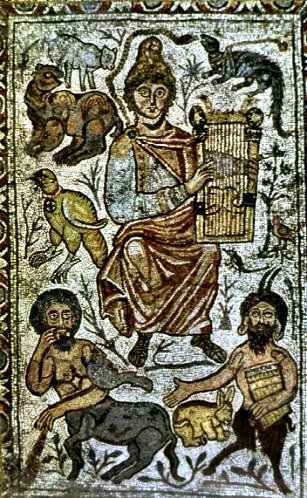
7. The Lamb of God ruling the beasts on a twelfth-century
tympanum at Parwich (Derbyshire).
On the right is a wolf - probably the Nordic Fenriswolf - and
at the bottom are two snakes
as if one referred to Biblical myth and the other to Midgaardsormen
of Norse mythology.
The pig at the top could be the symbol of lechery and lust.
The bird perched on the Lamb's head (?) could be the Holy Ghost
- or a peacock,
symbol of Life Everlasting.
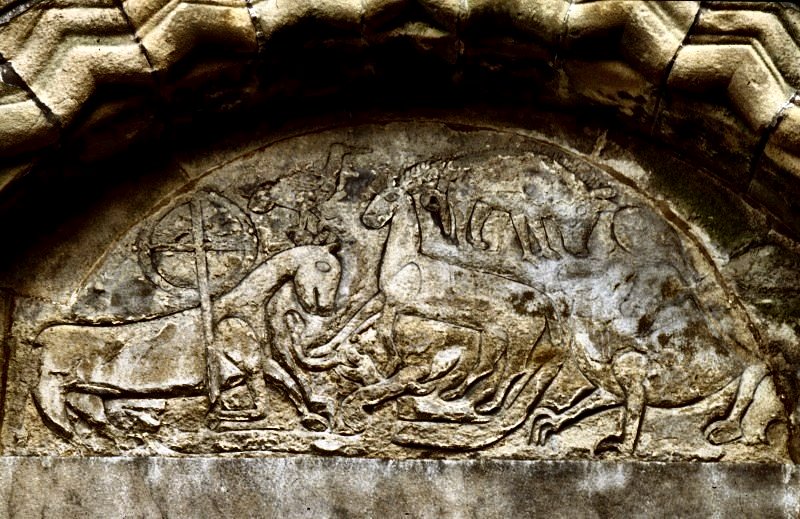
photo by Bob Trubshaw

8. A self-portrait as Adam, based on the above and related images.
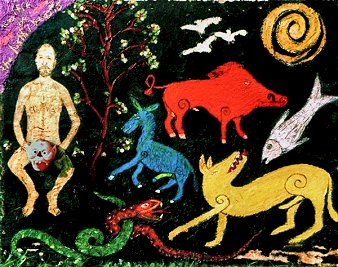
________________
Bronzes from Luristan (Persia) come from a much
older culture which flourished from the 12th to the 8th centuries
B.C.
Most of their bronzes were horse-trappings, hence the holes.


This panel prefigures Christian representations of Daniel in the
Lions' Den, or Samson,
as well as Adam/Jesus as Lord of Beasts.
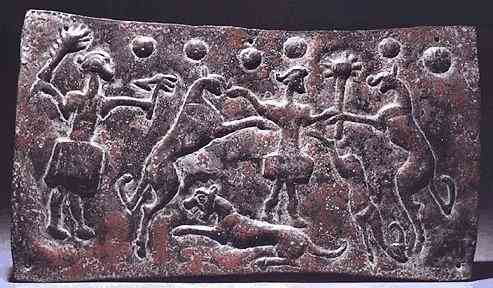
A cauldron from Giroft in Luristan.
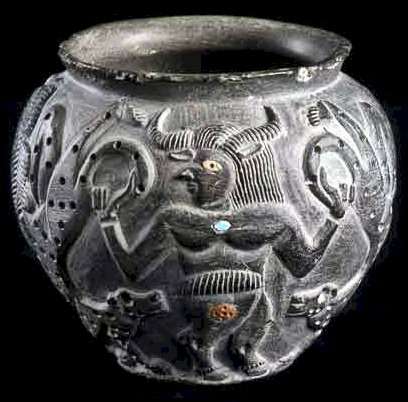
________________

